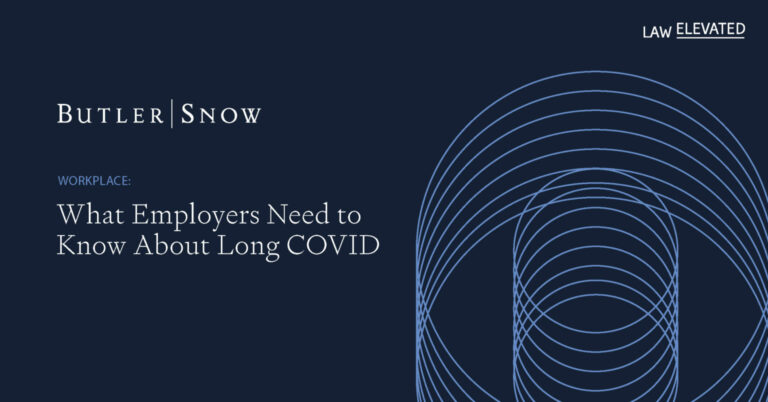While the worst of the COVID-19 pandemic is hopefully behind us, the disease still impacts the employment landscape and likely will continue to do so for some time. Out of the millions of people who have had COVID in the United States, it is currently estimated that 10-30 percent will develop residual symptoms or medical complications, known as “Long COVID.” As explained below, these lingering symptoms may create obligations and potential liability for employers under various employment laws, including the Americans with Disabilities Act (“ADA”).
What is “long COVID”?
According to the Centers for Disease Control and Prevention (CDC), long COVID conditions include a wide range of ongoing health problems that can last weeks, months, or even years. Some symptoms of long COVID include difficulty thinking or concentrating (sometimes referred to as “brain fog”), chest pain, headaches, sleep problems, and joint or muscle pain.
The CDC further explained that some people, especially those who had severe COVID-19, experience multiorgan effects or autoimmune conditions with symptoms lasting weeks or months after COVID-19 illness. Multiorgan effects can involve many body systems, including the heart, lung, kidney, skin, and brain.
As employers around the country are experiencing, employees suffering from long COVID may struggle with attendance and job performance. Employee may need time off from work based on incapacity, or for treatment or recovery, and/or may seek other workplace accommodations.
What laws apply?
Last year, the U.S. Department of Health & Human Services and U.S. Department of Justice issued guidance (“Joint Guidance”), stating that a person living with long COVID may meet the definition of disability under the Americans with Disabilities Act (“ADA”). The U.S. Equal Employment Opportunity Commission (“EEOC”) has provided similar guidance related to COVID-19 and the ADA. The ADA, of course, prohibits employers with 15 or more employees from discriminating against a qualified individual on the basis of disability. The ADA defines “disability” as a physical or mental impairment that substantially limits a major life activity, or a history of a substantially limiting impairment.
As the EEOC’s guidance confirms, applicants or employees are not automatically covered under the ADA based on a long COVID diagnosis. Determining whether a person’s long COVID (or COVID in any phase) is a disability as defined by the ADA requires a case-by-case determination; in other words, an individualized assessment is necessary to determine whether a person’s COVID-related conditions or symptoms substantially limit a major life activity. If the employee qualifies as disabled (and employers should bear in mind that the threshold for ADA-disabled status is not a high one), the employer must engage in an interactive process with the employee to determine whether it must provide “reasonable accommodations” to enable the employee to perform essential job functions. Reasonable accommodations are adjustments or modifications provided by an employer to enable people with disabilities to enjoy equal employment opportunities. Reasonable accommodations for employees suffering from long COVID might include periods of extended or intermittent leave for purposes of treatment or recovery, as well as modification of job duties, work schedules, or other terms and conditions of employment. However, employers are not required to provide accommodations that permanently alter essential job functions, and/or that create an undue hardship for the organization.
In addition to the ADA, employers dealing with long COVID in the workplace should keep in mind the requirements of the federal Family and Medical Leave Act (FMLA), as well as the requirements of state and local laws pertaining to Covid-related absences, accommodation of disabilities, and paid and unpaid medical and family leave.
The bottom line
Employers typically should assume long COVID will qualify as a disabling condition and be prepared to address leave and other accommodation requests from employees who continue to be affected by COVID long after their initial infection. Accommodations should be granted on a case-by-case basis after engaging in an interactive process and, when needed, consulting with legal counsel to ensure compliance with the ADA and any other applicable federal or state laws.
Employers should also conduct training or otherwise raise awareness of long COVID among managers and supervisors, so they are prepared when these issues surface among employees. As with all health-related matters, information about employee long COVID-related health issues should be treated as confidential and not discussed outside of “need-to-know” channels.
